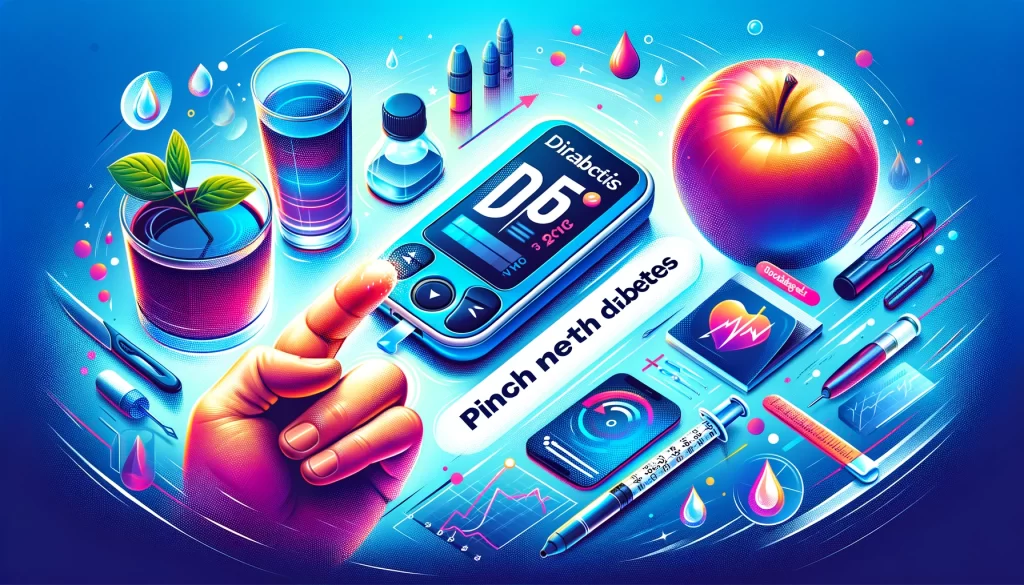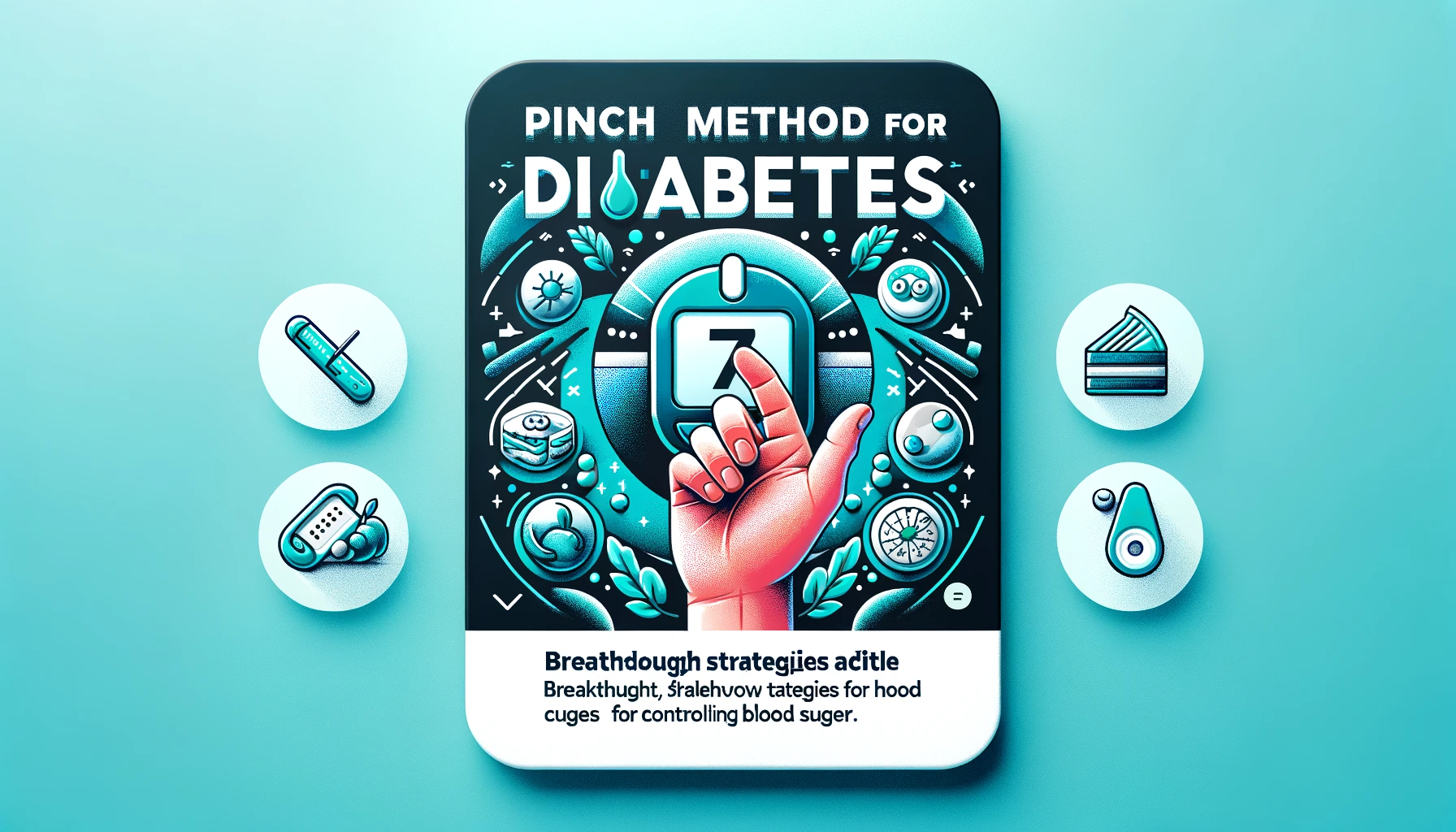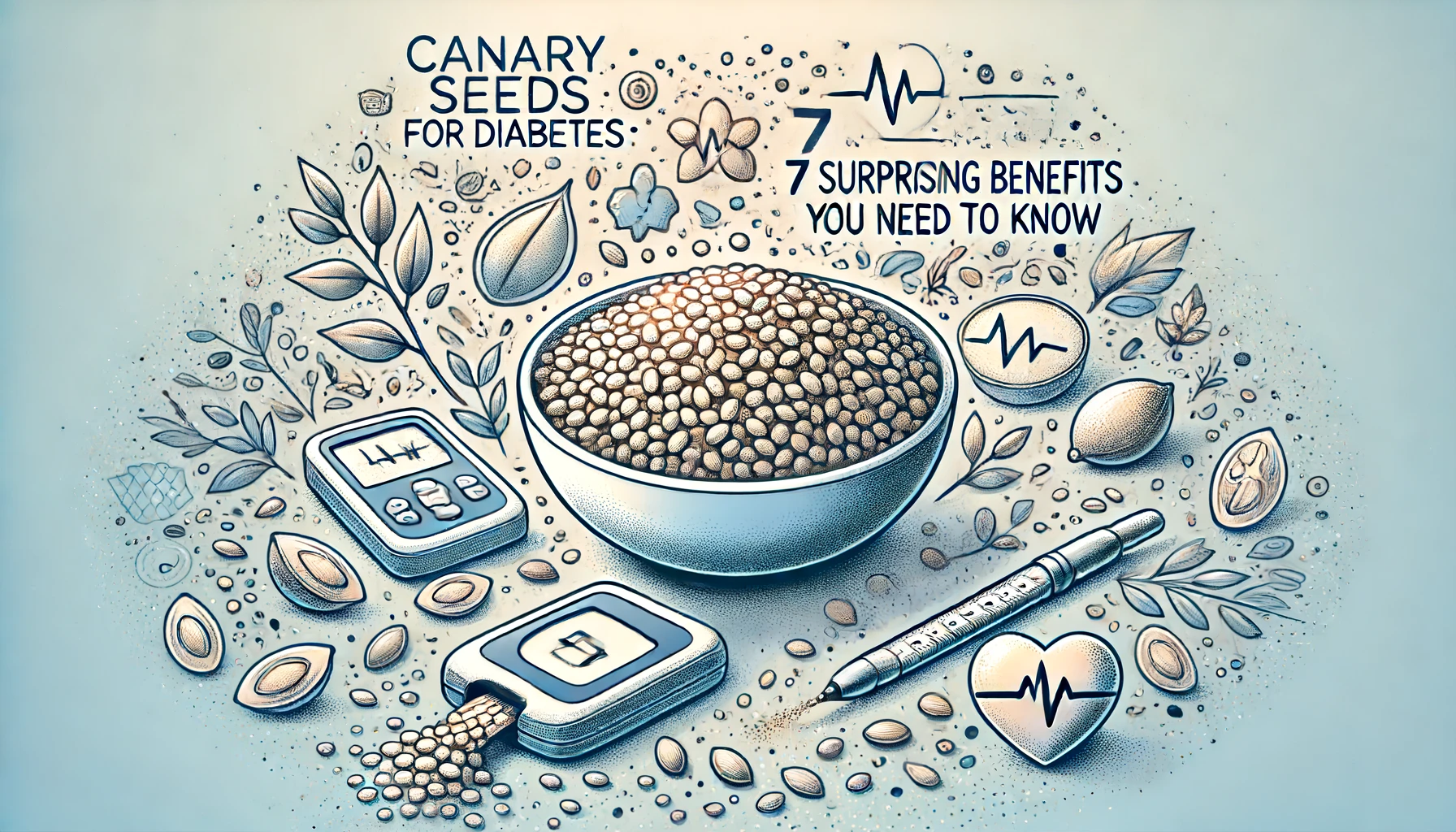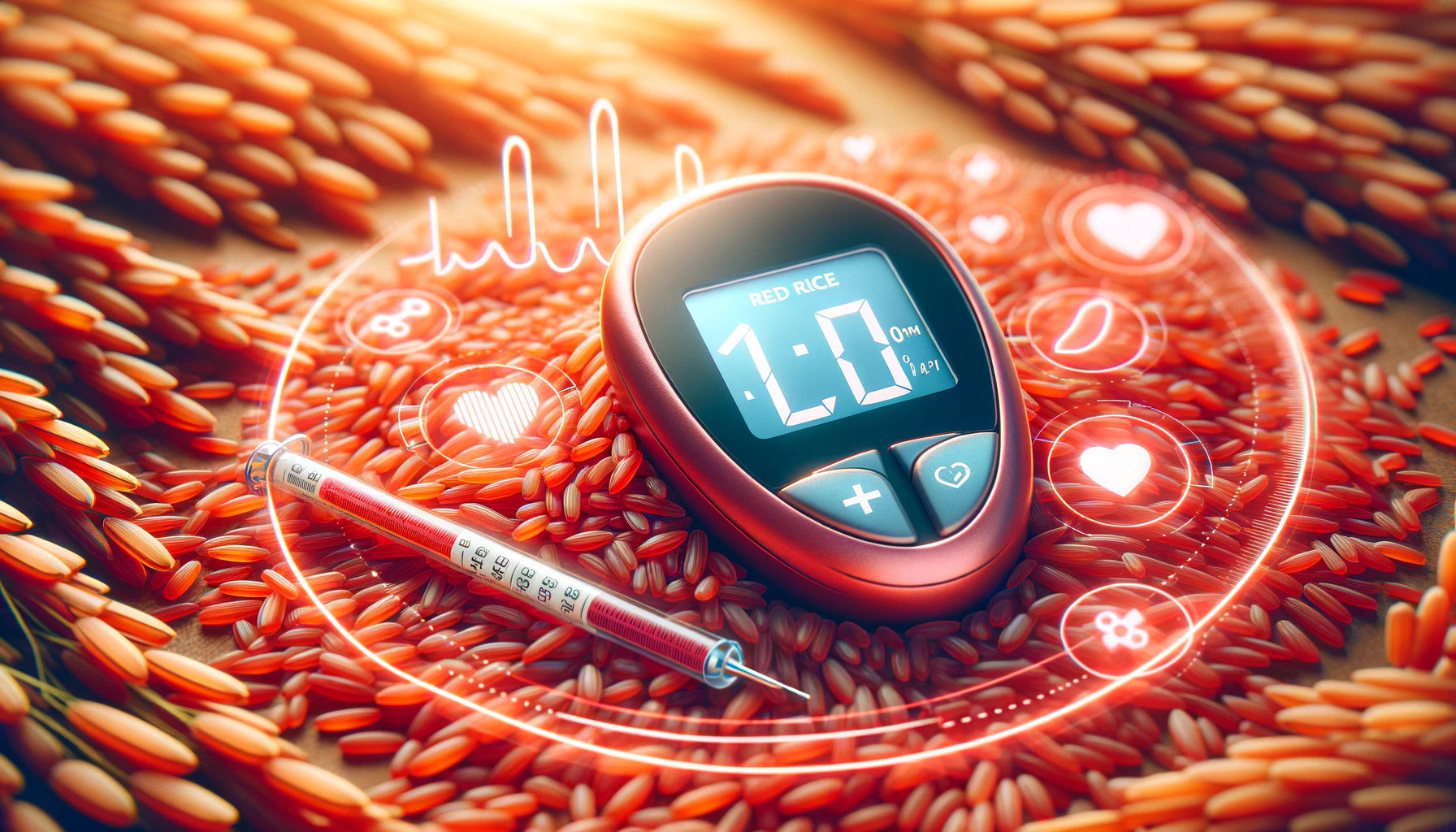Pinch Method for Diabetes
Diabetes remains one of the most challenging chronic diseases globally, affecting millions of lives with its complex management needs. Traditional treatments have ranged from medication to lifestyle changes, yet many individuals continue to struggle with controlling their blood sugar levels effectively. This has led to a growing interest in alternative methods that can provide additional relief or improvement in managing diabetes. One such emerging technique is the pinch method, a novel approach purported to offer breakthrough strategies for blood sugar control. This article delves into the top three breakthrough strategies of the pinch method, exploring its potential as a supplementary therapy for diabetes.
Understanding Diabetes
Diabetes is a metabolic disorder characterized primarily by high blood sugar levels over a prolonged period. This condition is typically divided into two types: Type 1 diabetes, where the body fails to produce sufficient insulin, and Type 2 diabetes, where the body cannot effectively use the insulin it produces. Both conditions lead to high levels of glucose in the blood, which can cause multiple health issues over time, including heart disease, kidney failure, and vision problems.
Effective diabetes management is crucial and usually involves monitoring blood sugar, maintaining a balanced diet, regular physical activity, and medication. However, these methods do not work for everyone, and many people with diabetes may experience fluctuating glucose levels despite adhering to their management plan. This inconsistency has prompted the search for additional, innovative strategies to complement existing treatments.
Overview of the Pinch Method
The pinch method is a lesser-known technique that involves specific physical manipulations, which some practitioners claim can influence the body’s insulin response and glucose metabolism. Originating from a combination of traditional practices and modern physiological theories, the method focuses on enhancing the body’s natural regulatory systems. Although not widely recognized in the medical community, the pinch method has garnered attention due to anecdotal success stories and its non-invasive nature.
The method’s theory suggests that by pinching certain skin areas, particularly those related to acupuncture points or neural pathways, the body can be stimulated to enhance pancreatic function and improve insulin sensitivity. This section will further explore the scientific basis, if any, behind these claims and discuss how it has been applied in practical scenarios.
Contents
- 1 Overview of the Pinch Method
- 2 Breakthrough Strategy #1: Increased Insulin Sensitivity
- 3 Breakthrough Strategy #2: Improved Pancreatic Function
- 4 Breakthrough Strategy #3: Reduction in Glycemic Variability
- 5 Conclusion – Pinch Method for Diabetes
- 6 FAQ on the Pinch Method for Diabetes
- 7 Diabetes Related Posts
Overview of the Pinch Method
The pinch method, an emerging alternative treatment for diabetes, represents a unique intersection of traditional holistic practices and modern therapeutic techniques. It suggests that specific physical manipulations of the skin, akin to acupressure, can potentially impact blood sugar regulation. This method draws from the principle that certain points on the body, when stimulated, can influence internal pathways, possibly affecting pancreatic function and insulin sensitivity.
Theoretical Foundations
The theoretical basis of the pinch method is rooted in the concept of bodily meridians, which are central to several traditional Eastern medical practices, including acupuncture and acupressure. According to these traditions, the human body has a network of energy pathways through which life energy, or “qi,” flows. Disruptions or imbalances in this flow are believed to cause health issues, including metabolic disorders like diabetes.
Proponents of the pinch method argue that by applying a pinching technique to specific points on these meridians, particularly those that intersect with the pathways related to the pancreas and insulin production, one can stimulate the body’s natural healing processes. This stimulation is hypothesized to enhance pancreatic function, improve insulin sensitivity, and regulate blood sugar levels more effectively. The pinching action is believed to send signals through the nervous system, which in turn triggers the endocrine system to regulate hormonal outputs more efficiently.
Initial Discovery and Development
The origins of the pinch method are somewhat obscure, but it appears to be a modern adaptation of traditional practices, conceptualized specifically for addressing the complexities of diabetes. It was first noted in holistic health circles where practitioners were exploring non-invasive ways to manage chronic conditions. The method gained some prominence when early anecdotal evidence suggested that patients experienced noticeable improvements in their glucose management after undergoing treatment.
Development of the method has been largely experimental, with various practitioners refining techniques through trial and observation. Initial tests often involved applying the pinch method in conjunction with other therapies, such as dietary changes and conventional diabetes treatments, making it difficult to isolate its effects initially. However, as more focused studies were conducted, the method began to show promise as a standalone supportive treatment.
In recent years, some clinical studies have attempted to document and analyze the outcomes of the pinch method, though extensive peer-reviewed research is still lacking. These studies primarily look at the method’s efficacy in improving insulin sensitivity and reducing the need for medication in mild to moderate cases of diabetes.
Current Status
Today, the pinch method is practiced by a niche group of holistic health practitioners who specialize in or are open to alternative and complementary therapies. It is often recommended as a supplementary treatment, emphasizing that while it may aid in managing diabetes symptoms, it should not replace conventional medical treatments prescribed by healthcare professionals.
The method’s non-invasive nature and the absence of pharmacological elements make it an attractive option for those wary of long-term medication use or interested in exploring holistic approaches to health. Nonetheless, the scientific community remains cautious, advocating for more robust research to validate the method’s effectiveness and safety comprehensively.
As the pinch method continues to be examined and its techniques refined, it stands as a testament to the ongoing search for innovative and integrative treatments in the fight against diabetes, reflecting a broader trend toward personalizing and diversifying healthcare approaches.
Breakthrough Strategy #1: Increased Insulin Sensitivity

One of the primary strategies through which the pinch method is purported to benefit individuals with diabetes is by enhancing insulin sensitivity. This improvement in how effectively the body uses insulin can be crucial for both Type 1 and Type 2 diabetes management, as increased insulin sensitivity allows for more efficient glucose uptake from the bloodstream, thereby lowering blood sugar levels.
Theoretical Basis of the Pinch Method on Insulin Sensitivity
The pinch method is based on the premise that targeted physical stimulation of specific body points can modulate physiological functions. The technique involves pinching the skin at selected sites, theoretically linked to energy meridians that influence metabolic processes, including insulin regulation. According to practitioners, this manipulation activates certain neural pathways that communicate with the pancreas and other organs involved in metabolic regulation, thereby enhancing their functionality.
The concept hinges on the idea that stimulating these points can improve pancreatic health, which is directly responsible for insulin production. Moreover, by improving the signaling pathways between body tissues and the pancreas, the method could help in making the cells more responsive to insulin. This would be particularly beneficial in Type 2 diabetes, where insulin resistance is a significant issue.
Scientific Data Supporting Increased Insulin Sensitivity
While the scientific community has not widely recognized or validated the pinch method due to its relatively recent development and the lack of extensive clinical trials, some preliminary studies and anecdotal evidence suggest potential benefits in improving insulin sensitivity. These studies have typically involved small participant groups and have not always adhered to the rigorous standards required for widespread medical endorsement.
- Preliminary Clinical Studies: A few pilot studies conducted by holistic health centers have reported that participants practicing the pinch method showed a marked improvement in their glucose tolerance tests, an indicator of increased insulin sensitivity. However, these studies often lack control groups and long-term follow-up, which are necessary to establish causality and long-term effects.
- Anecdotal Reports: Numerous personal testimonials describe reductions in glycosylated hemoglobin (HbA1c) levels, a marker for long-term glucose management, following regular application of the pinch method. While these accounts are not scientific proof, they do provide a basis for further investigation.
- Mechanistic Studies: Some research has explored the impact of similar physical manipulation techniques, like acupuncture, on insulin sensitivity. These studies suggest that mechanical stimulation of certain body points can lead to physiological responses that improve metabolic health, possibly through enhanced nervous system activity or local increases in blood flow.
Critiques and Limitations
Critically, the pinch method faces skepticism primarily due to the lack of substantial, peer-reviewed research backing its efficacy. The method’s reliance on traditional medicine concepts, such as meridians and energy flow, which are not universally accepted in modern medicine, further challenges its acceptance in mainstream diabetes treatment.
Moreover, variations in the technique, such as differences in pinching intensity, duration, and specific points targeted, can lead to inconsistent results, making it difficult to standardize or recommend universally. There is also a need for larger, randomized controlled trials to more accurately assess the method’s impact on insulin sensitivity and overall diabetes management.
Conclusion
In conclusion, while the pinch method presents a novel approach to enhancing insulin sensitivity, it remains a complementary therapy that requires further scientific validation. For individuals interested in this method, it is advisable to consult with healthcare providers and consider it as part of a broader diabetes management plan. As research into the method continues, it may yet prove to be a valuable addition to the range of options available for improving the lives of those with diabetes.
ALSO READ: Sugar Defender Scam – (CAUTION 2024) Fraud Risks to Avoid or Safe Ingredients That Work?
Breakthrough Strategy #2: Improved Pancreatic Function
The pancreas plays a critical role in diabetes management as it produces insulin, the hormone responsible for regulating blood glucose levels. The second breakthrough strategy proposed by proponents of the pinch method is its potential to enhance pancreatic function. This section explores how the pinch method could theoretically influence the pancreas and reviews any scientific data that might support these claims.
Theoretical Explanation of the Pinch Method’s Effect on the Pancreas
According to the principles underlying the pinch method, manipulating specific points in the body can have systemic effects, including on organ functions. For the pancreas, the method posits that targeted pinching can stimulate the nerves or energy pathways that connect directly to the pancreas, potentially invigorating its function. The theory is based on a combination of traditional Chinese medicine and a modern understanding of neurophysiological connections, suggesting that such physical stimulation can enhance blood flow and nerve activity to the pancreas, thereby improving its health and insulin-producing capabilities.
Scientific Investigations into Pancreatic Health Enhancement
To date, scientific investigations into the effects of the pinch method specifically on pancreatic function are sparse. However, some related studies on acupuncture and similar manual therapies provide indirect insights:
- Acupuncture and Pancreatic Function Studies: Research in the field of acupuncture, which shares some conceptual frameworks with the pinch method, has shown that stimulation of certain acupoints can influence organs associated with those points. Some studies have reported that acupuncture can enhance pancreatic function, leading to increased insulin secretion and improved glucose metabolism. For instance, a study published in the “Journal of Endocrinological Investigation” demonstrated that acupuncture at specific points significantly increased insulin levels in patients with type 2 diabetes.
- Experimental Data on Manual Therapy: Experimental studies on animals and limited clinical trials in humans have suggested that manual therapy techniques, including massage and pressure point manipulation, may improve organ function by increasing blood circulation and modulating nervous system activity. These findings offer a tentative basis for the hypothesis that the pinch method could similarly benefit pancreatic health.
- Anecdotal Evidence and Pilot Studies: Anecdotal evidence from practitioners who use the pinch method suggests improvements in diabetes symptoms and insulin management in their patients. While such reports are not scientifically rigorous, they have prompted some preliminary clinical evaluations. A small-scale pilot study involving individuals with type 2 diabetes noted improvements in fasting blood glucose levels after a regimen of pinch method treatments over several weeks. However, these studies lacked control groups and were not peer-reviewed, necessitating cautious interpretation of the results.
Limitations and the Need for Further Research
The primary limitation in validating the pinch method’s effectiveness for improving pancreatic function is the lack of large-scale, rigorous clinical trials. The existing studies are often small, lack proper controls, and sometimes do not follow standard scientific protocols that would make their findings universally acceptable in the medical community. Moreover, the theoretical basis of the method, deeply rooted in traditional medicine’s concept of energy pathways, remains controversial in contemporary medical science.
Conclusion
In summary, while there is some indirect evidence that could suggest potential benefits of the pinch method for enhancing pancreatic function, substantial scientific proof is still lacking. The method’s promising aspects should be explored further through well-designed clinical trials to establish a clear connection between the technique and its purported benefits. For now, the pinch method should be considered a complementary approach, used alongside conventional diabetes treatments and under medical guidance, to ensure comprehensive care and safety for individuals exploring this alternative therapy.
Breakthrough Strategy #3: Reduction in Glycemic Variability

Glycemic variability refers to fluctuations in blood glucose levels that occur throughout the day, including spikes after meals and drops that can happen during fasting periods. These fluctuations are particularly significant for individuals with diabetes, as high variability is associated with an increased risk of complications. The third breakthrough strategy of the pinch method purports to reduce these fluctuations, aiming to stabilize blood sugar levels more consistently. This section explores the mechanism by which the pinch method might influence glycemic variability and reviews any relevant case studies or testimonials that support this claim.
Mechanism of Action
The pinch method is theorized to affect glycemic variability by stimulating specific points in the body that are believed to be linked to the regulation of glucose metabolism. According to proponents of the method, the technique involves pinching skin near sites that correspond to acupuncture points or nerve pathways that influence endocrine functions, including insulin secretion and glucose absorption.
The idea is that by stimulating these points, the pinch method can help modulate the body’s response to insulin, potentially making the insulin response more efficient after meals and reducing excessive blood sugar drops that can occur during fasting. This could be due to enhanced communication between the pancreas and other organs involved in energy metabolism, facilitated by neuroendocrine changes initiated by the pinch method.
Examination of Case Studies and Testimonials
While comprehensive clinical research on the pinch method is limited, several case studies and personal testimonials offer insight into its potential effects on glycemic variability:
- Case Study 1: A case study involving a 58-year-old male with type 2 diabetes reported significant stabilization in his daily blood glucose levels after adopting the pinch method. Over three months, during which he consistently applied the method twice daily, his records showed a decrease in the amplitude of glycemic excursions, particularly postprandial spikes.
- Case Study 2: Another case involved a 45-year-old female who experienced frequent hypoglycemic events despite being on a stable regimen of insulin and other medications. After incorporating the pinch method into her routine, she noted a noticeable reduction in these events. Her glucose monitoring data indicated a smoother glucose curve with fewer dips below the target range.
- Testimonials: Numerous testimonials from individuals practicing the pinch method have been shared in online forums and at holistic health seminars. Many of these personal stories highlight improved day-to-day consistency in blood sugar levels, with people reporting fewer instances of feeling the physical symptoms of high or low blood sugars, such as fatigue or shakiness.
Scientific Perspective and Skepticism
It is important to note that testimonials and individual case studies, while valuable for generating hypotheses, do not provide the same level of evidence as controlled clinical trials. Skeptics of the pinch method point out that without more rigorous research, it is difficult to definitively attribute improvements in glycemic variability to the method alone. Factors such as placebo effects, concurrent lifestyle changes, and variations in medication adherence can also influence the outcomes observed in such reports.
Moreover, the physiological explanation provided by proponents of the pinch method, involving stimulation of energy pathways or meridians, remains controversial within the wider medical community. Many scientists and clinicians argue that more tangible physiological mechanisms, such as direct effects on nerve or vascular function, need to be demonstrated and documented through empirical research.
Conclusion
In conclusion, while the pinch method holds potential as a non-invasive tool to reduce glycemic variability in people with diabetes, the evidence supporting its efficacy is still emerging. Further scientific exploration, including randomized controlled trials, is necessary to validate the method’s effectiveness and clarify its role in diabetes management. For those interested in exploring alternative treatments like the pinch method, it is crucial to do so under the guidance of a healthcare professional, ensuring it complements established diabetes care protocols.
Conclusion – Pinch Method for Diabetes

The pinch method presents a novel and intriguing approach to diabetes management, proposing potential benefits that could significantly impact the quality of life for those struggling with this chronic condition. Throughout this exploration, we have examined three key strategies where the pinch method might offer breakthrough benefits: increasing insulin sensitivity, enhancing pancreatic function, and reducing glycemic variability. Each of these strategies addresses fundamental aspects of diabetes management and suggests that the pinch method could complement traditional treatments in meaningful ways.
Increasing insulin sensitivity through the pinch method could potentially allow for better utilization of the body’s insulin, reducing the likelihood of high blood glucose levels. Enhancing pancreatic function could lead to more natural insulin production, which is crucial, especially for individuals with type 2 diabetes. Lastly, the potential reduction in glycemic variability could help stabilize blood sugar levels, preventing the dangerous highs and lows associated with diabetes and thereby reducing the risk of complications such as cardiovascular disease, kidney damage, and neuropathy.
However, while the initial evidence from case studies, anecdotal reports, and preliminary research points towards possible benefits, these findings are not yet robust enough to form a definitive conclusion. The pinch method, like many alternative therapies, remains under-studied and not fully integrated into mainstream medical practices. This gap underscores the necessity for more comprehensive, well-structured clinical research to validate the effectiveness and safety of the pinch method in a controlled, scientific manner.
For individuals considering the pinch method as part of their diabetes management plan, it is essential to approach it with cautious optimism. Integrating such techniques should be done in consultation with healthcare professionals to ensure that it complements existing treatments. The potential of the pinch method offers hope, but it must be pursued thoughtfully, with a commitment to rigorous evaluation and an understanding of the scientific process that underpins reliable medical treatments. As research progresses, the pinch method may either find its place in the toolkit of diabetes management or serve as a stepping stone toward other innovative approaches in the ongoing battle against this pervasive disease.
ALSO READ: Sugar Defender Reviews – [UPDATED 2024] Does It Really Work?
FAQ on the Pinch Method for Diabetes
-
What is the pinch method for diabetes?
The pinch method is an alternative treatment approach that involves pinching specific areas of the skin to potentially improve diabetes management. It is based on the concept that stimulating certain points can influence the body’s energy pathways, insulin sensitivity, and pancreatic function.
-
How does the pinch method aim to increase insulin sensitivity?
The pinch method theorizes that pinching certain points on the body stimulates neural pathways that enhance insulin sensitivity, thereby improving the body’s ability to use insulin effectively and reduce blood glucose levels.
-
Can the pinch method improve pancreatic function?
Proponents of the pinch method believe that it can invigorate pancreatic function by enhancing blood flow and nerve activity to the pancreas through targeted physical stimulation, potentially leading to increased natural insulin production.
-
How might the pinch method reduce glycemic variability?
By stimulating specific body points linked to glucose metabolism, the pinch method is thought to help stabilize blood sugar levels, reducing the frequency and severity of glucose spikes and drops throughout the day.
-
Are there any scientific studies supporting the pinch method?
As of now, scientific research on the pinch method is limited and primarily consists of small-scale studies and anecdotal evidence. More rigorous, peer-reviewed research is needed to substantiate the claims made by practitioners of the pinch method.
-
Is the pinch method safe to use for everyone with diabetes?
While the pinch method is generally considered non-invasive and safe, individuals need to consult with their healthcare provider before starting any new treatment. The method should not replace conventional therapies but may be used as a complementary approach.
-
Can the pinch method replace conventional diabetes treatments?
No, the pinch method should not be seen as a replacement for established diabetes treatments such as medication, insulin therapy, and lifestyle modifications. It may be used alongside these treatments to potentially enhance overall diabetes management.
-
How often should the pinch method be applied?
-
Where can I learn how to properly perform the pinch method?
It is advisable to learn the pinch method from a qualified healthcare professional or a practitioner experienced in alternative therapies for diabetes. This ensures the technique is performed correctly and safely.
-
What should I do if I experience discomfort or adverse effects from the pinch method?
If you experience any discomfort, pain, or other adverse effects, stop the treatment immediately and consult your healthcare provider. It is important to monitor your health and adjust any new treatment in response to how your body responds.















